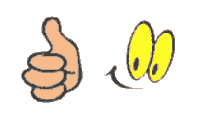Table of Contents1 Chapter 1 - Introduction & Problem Solution 1
1.1 Solution Methodology 2
2 Chapter 2 - Performance Metrics of Numerically Controlled Machines 4
1 2.1 Geometrical Errors 4
2.1.1 Backlash 9
2.1.2 Scaling Mismatch 10
2.1.3 Squareness Error 12
2.1.4 Cyclic Error 13
2.1.5 Lateral Play 15
2.1.6 Reversal Spikes 16
1 2.1.7 Stick Slip 18
2.1.8 Vibration 19
2.1.9 Master-Slave Changeover 20
2.1.10 Straightness 22
2.1.11 ASME Standard Test Method 23
3 Chapter 3 - Performance Evaluation of Existing Machine 253.1 Discussion o f Measurements of Microkinetics Performance 26
3.2 Discussion o f Measurements of Prolight Performance 31
4 Chapter 4 - Design Specifications for the New Machine 36
5 Chapter 5 - Design of the New Machine 39
5.1 The Hardware 40
5.1.1 The Structure 40
5.1.2 X & Y Axis 41
5.1.2.1 Axis Motor 43
5.1.2.2 Axis Actuator Hardware 45
5.1.2.3 Rolling Contact Bearing 48
5.1.2.4 Motor Mounting 54
5.1.2.5 Linear Slides 56
5.1.3 Z Axis 61
5.2 The Software
5.3 Driver and Electronics
6 Chapter 6 - Measurement of Performance of the New Mill
7 Chapter 7 - Discussion of Results
8 Chapter 8 - Recommendation for Future Work
AppendicesA. G & M Codes
B. Calculation Sheet for the Ball Screw
C. Important PartsofEMC.INI File
D. Diagram ofThe Driver’s Circuit
E. Calculation and Selection o f the Stepper Motor
F. Engineering Drawings of GVSU Mill
ReferencesTable of FiguresFigure 2.1.1 the hardware required for the Renishaw ballbar test. 5
Figure 2.1.2 feed in, out, angular overshoot arcs and the data capture arcs. 6
Figure 2.1.3 the data capture range of the ballhar transducer is approximately 2mm. 7
Figure 2.1.4 a plot o f time vs. transducer travel shows the period of machine
acceleration and how it would affect the integrity o f the data collected. 7
Figure 2.1.1.1 an example of positive backlash. 9
Figure 2.1.1.2 the interpolation of the inward step in the ball bar plot. 10
Figure 2.1.2.1 an example of a scaling mismatch error. 11
Figure 2.1.3.1 positive and negative squareness. 13
Figure 2.1.4.1 an example of cyclic error. 14
Figure 2.1.5.1 an example of a lateral play in the y axis. 15
Figure 2.1.6.1 an example plot of a reversal spikes error. 16
Figure 2.1.6.2 an example o f the effect of a reversal spikes error on the actual circle milled on the part.

